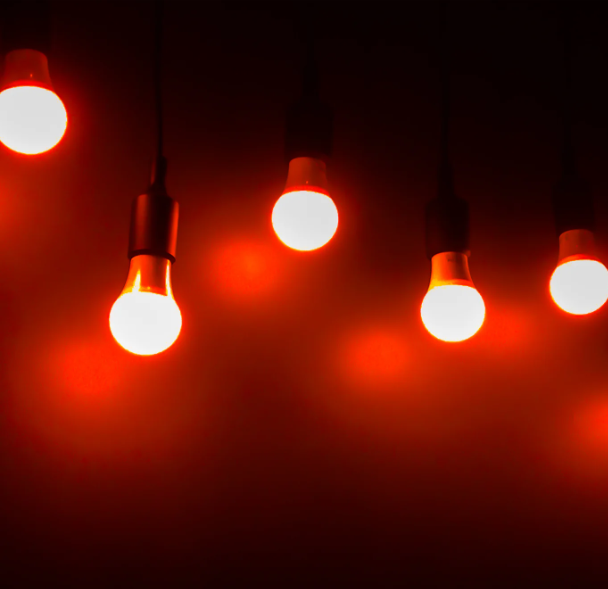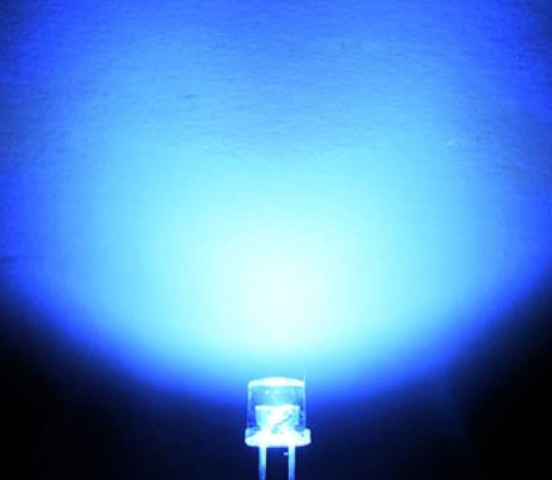Free Shipping over $49
Red, Green, and Blue (RGB) lights, when integrated into flashlights, offer versatile functionality beyond standard white light illumination. Each color serves unique purposes and provides distinct advantages in various contexts.
What is Red Light and its Benefits?
Red Light in a flashlight refers to a Light light-emitting diode that emits red light. This type of LED is characterized by its long wavelength, typically around 620-750 nanometers, which produces a distinct red hue. Red LEDs in flashlights offer several unique advantages:
 | • Preserving Night Vision Red light has minimal impact on your eyes' ability to adapt to darkness. This makes it ideal for use during nighttime activities where maintaining night vision is crucial, such as stargazing, wildlife observation, or reading maps without temporarily blinding yourself or others. • Reducing Attraction Insects are less attracted to red light compared to other colors, making it a preferred choice for outdoor enthusiasts who want to minimize insect disturbances. |
• Stealth and Safety Red light is less visible from a distance than white light, providing a degree of stealth that can be advantageous for camping, security patrols, or military operations where concealment is important. • Hunting Applications Some hunters use red lights to navigate without spooking game animals, as these animals are less sensitive to red wavelengths compared to brighter lights. • Emergency Signaling While not as bright as other colors for long-distance visibility, red can still serve as an emergency signal color due to its inherent contrast against dark backgrounds. |
In summary, These features make red LED flashlights versatile tools suitable for a variety of situations requiring low-light visibility without compromising the user's adapted night vision or attracting unwanted attention.
What is Green Light and its Benefits?
Green light in a flashlight refers to a light-emitting diode that emits green light. This type of LED operates at a wavelength typically between 495-570 nanometers, producing a bright, clear green color. Green LEDs in flashlights offer specific benefits:
 | • Enhanced Visibility in Low Light Green light is perceived more efficiently by the human eye under low-light conditions compared to other colors, including red. This makes it ideal for activities like hiking, hunting, or navigating in environments where improved visibility without a harsh glare is needed. • Longer Range Penetration Green light can penetrate fog, smoke, and certain weather conditions better than red or even some white lights, making it suitable for search and rescue operations or outdoor adventures in challenging environments. |
• Minimal Disturbance to Wildlife Similar to red light, green light also attracts fewer insects and is less disruptive to nocturnal wildlife, which is beneficial for nature observation or photography. • Hunting and Tactical Use Hunters often prefer green light because it enhances the visibility of animal eyes at night due to the contrast with the environment, aiding in tracking and spotting game. It's also used in tactical scenarios for its concealment. • Preserving Night Vision While not as effective as red light in preserving night vision, green light still causes less eye strain and disruption to night adaptation than brighter white lights. |
In summary, a green LED flashlight is a practical and versatile tool for those requiring improved visibility and contrast in low-light conditions without causing significant disturbance to the environment or compromising night vision to a great extent.
What is Blue Light and its Benefits?
Blue LED in a flashlight incorporates a light-emitting diode that emits blue light, typically with a wavelength ranging from 450 to 495 nanometers. This results in a cool, crisp, and vibrant blue illumination. The use of blue LED in flashlights offers several specialized applications:
 | • Nighttime Reading and Detail Work Blue light has been found to improve visual acuity and contrast, making it useful for reading maps, charts, or performing tasks that require attention to detail during nighttime or in dimly lit environments. • Detecting Fluorescence Certain materials, fluids, and biological substances fluoresce under blue light, making blue LED flashlights valuable tools for forensic investigations, detecting pet stains, or identifying counterfeit documents and currency. |
• Marine and Underwater Use Blue light penetrates water more effectively than longer wavelengths like red or green, enhancing visibility underwater for divers or marine researchers. • Medical Applications In medical settings, blue light can be used for inspecting skin conditions or for phototherapy treatments due to its effects on certain biological processes. • Mood and Alertness Although not a primary function of a flashlight, blue light has been associated with increased alertness and mood enhancement, which might be beneficial in emergency situations or during extended work shifts in low-light conditions. |
In summary, Blue light in flashlights offers several advantages. It has a shorter wavelength, which results in higher energy photons compared to longer wavelength lights. This leads to better penetration through fog and smoke, enhancing visibility in such conditions. Furthermore, it can be more effective at illuminating certain materials and fluids, making it useful in forensic investigations or detecting pet stains.
Red light at night is an absolute game changer! I also love it for my headlamps ;)